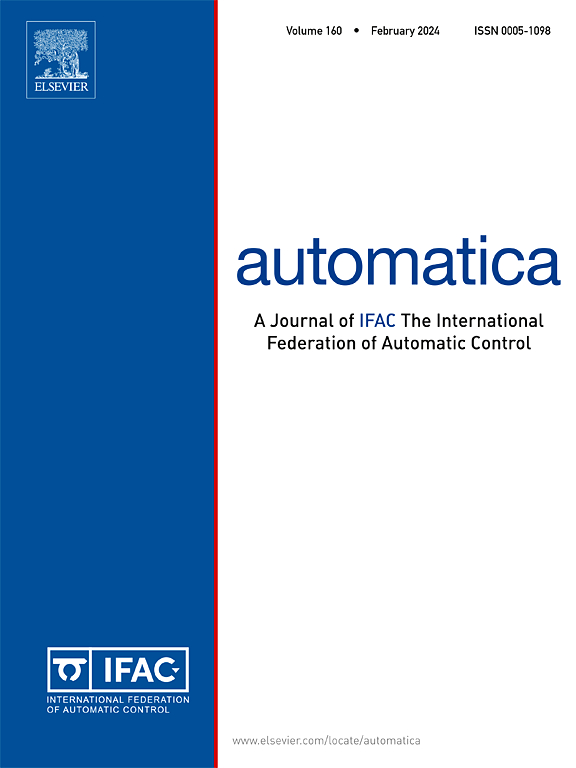Accelerating recursive least squares adaptation/learning algorithms using a dynamic adaptation gain
IF 4.8
2区 计算机科学
Q1 AUTOMATION & CONTROL SYSTEMS
引用次数: 0
Abstract
The concept of “dynamic adaptation gain/learning rate” has been introduced in Landau et al. (2023) in order to accelerate the adaptation/learning transients in the context of adaptation/learning algorithms using constant scalar adaptation gain/learning rate. The present paper shows that inserting a ”dynamic adaptation gain/learning rate” into adaptation/learning algorithms with time varying matrix adaptation gain/learning rate belonging to the family of recursive least squares algorithms leads also to a significant acceleration of the adaptation/ learning transients. The proposed algorithms are analyzed in a deterministic and stochastic environment. This allows to emphasize the potential of these algorithms compared with the classical recursive least squares type algorithms. Comparative simulations and experimental results (an active noise control system) further illustrate the performance of these algorithms.
使用动态适应增益加速递归最小二乘自适应/学习算法
Landau等人(2023)引入了“动态适应增益/学习率”的概念,以便在使用恒定标量适应增益/学习率的适应/学习算法的背景下加速适应/学习瞬态。本文表明,在属于递归最小二乘算法族的时变矩阵自适应增益/学习率的自适应/学习算法中加入“动态自适应增益/学习率”,也会导致自适应/学习瞬态的显著加速。在确定性和随机环境下对所提出的算法进行了分析。与经典的递归最小二乘算法相比,这可以强调这些算法的潜力。对比仿真和实验结果(一个有源噪声控制系统)进一步说明了这些算法的性能。
本文章由计算机程序翻译,如有差异,请以英文原文为准。
求助全文
约1分钟内获得全文
求助全文
来源期刊

Automatica
工程技术-工程:电子与电气
CiteScore
10.70
自引率
7.80%
发文量
617
审稿时长
5 months
期刊介绍:
Automatica is a leading archival publication in the field of systems and control. The field encompasses today a broad set of areas and topics, and is thriving not only within itself but also in terms of its impact on other fields, such as communications, computers, biology, energy and economics. Since its inception in 1963, Automatica has kept abreast with the evolution of the field over the years, and has emerged as a leading publication driving the trends in the field.
After being founded in 1963, Automatica became a journal of the International Federation of Automatic Control (IFAC) in 1969. It features a characteristic blend of theoretical and applied papers of archival, lasting value, reporting cutting edge research results by authors across the globe. It features articles in distinct categories, including regular, brief and survey papers, technical communiqués, correspondence items, as well as reviews on published books of interest to the readership. It occasionally publishes special issues on emerging new topics or established mature topics of interest to a broad audience.
Automatica solicits original high-quality contributions in all the categories listed above, and in all areas of systems and control interpreted in a broad sense and evolving constantly. They may be submitted directly to a subject editor or to the Editor-in-Chief if not sure about the subject area. Editorial procedures in place assure careful, fair, and prompt handling of all submitted articles. Accepted papers appear in the journal in the shortest time feasible given production time constraints.
 求助内容:
求助内容: 应助结果提醒方式:
应助结果提醒方式:


